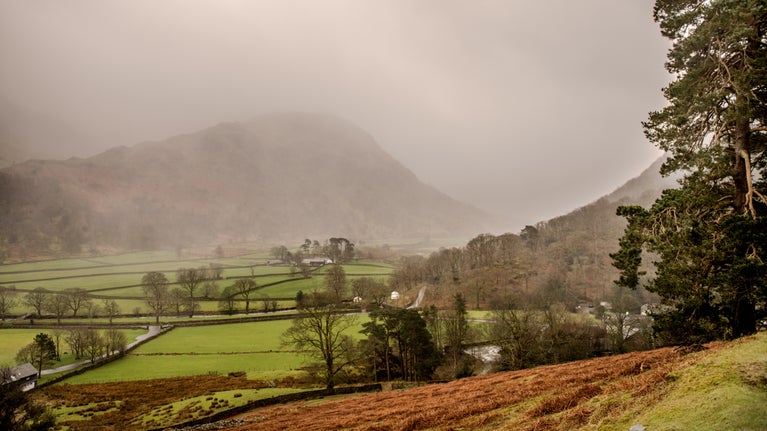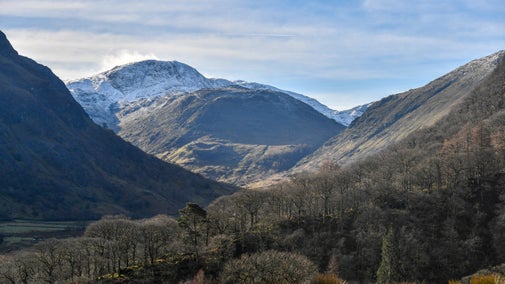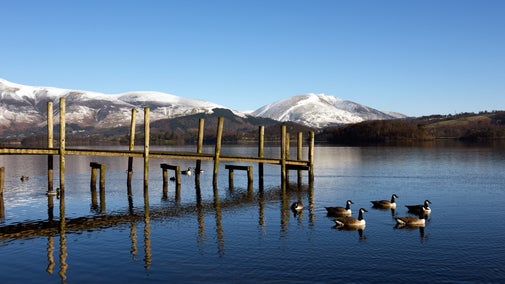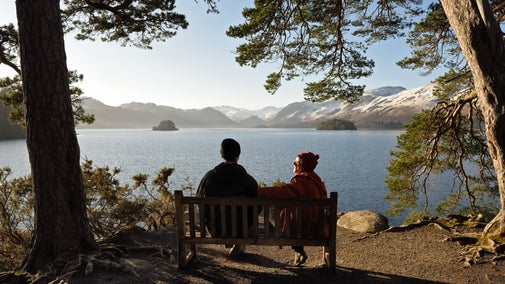Thorneythwaite Farm Picnic and Waterfall walk
Lake District
This short walk introduces you to the three parts of a hill farm – the in-bye land, the in-take land and the open fell. You will see hay meadows and wood pasture as they're gradually restored, then climb to discover a hidden valley with a beautiful waterfall – all overlooked by towering Coombe Crag.
Near to
Borrowdale and Derwent WaterStart point
Seatoller National Trust car park, grid ref: NY245137Trail information
Waterfall
The waterfall is a beautiful place to stop for a picnic at the midpoint of your walk. Please look out for the steep drops when taking photos and looking for the best spot to sit.
More near here
Castle Crag from Seatoller trail: the scenic route
If you would like to climb Castle Crag in a more civilised way, try this walk that also provides great views across the valley.

Seatoller, Styhead Tarn and Grains Gill walk
An invigorating circular walk takes you from Seathwaite into the heart of the Lakeland fells, with peaceful tarns to picnic by and views of Great End and Great Gable.

Peace How walk from High Brandelhow jetty
From High Brandelhow jetty, follow this gentle walk to Peace How – a hill dedicated to providing tranquility after the First World War, with views to Derwent Water and Castle Crag.

Borger Dalr geology walk
Discover more about the origins of Borrowdale on the Borger Dalr geology walk. If you are lucky, you may even see a red squirrel too.

Get in touch
Our partners

We’ve partnered with Cotswold Outdoor to help everyone make the most of their time outdoors in the places we care for.
You might also be interested in
Walking in the Lake District
From gentle ambles to more challenging hikes, these are some of the best walks to explore the heart of the Lake District.

Walking
Explore some of the finest landscapes in our care on coastal paths, accessible trails, woodland walks and everything in between. Find the best places to walk near you.

Cotswold Outdoor: our exclusive walking partner
Learn about the National Trust’s ongoing partnership with Cotswold Outdoor. Find out how they help us care for precious places and the exclusive discount available for National Trust supporters.

Staying safe at National Trust places
The special places in National Trust care sometimes come with a few risks for visitors, be it coastline or countryside. Find out how to keep safe throughout your visits.

Follow the Countryside Code
Help to look after National Trust places by observing a few simple guidelines during your visit and following the Countryside Code.

Things to see and do in Borrowdale
Discover the top things to see and do during your visit, including scenic walks, ancient woodlands, far-reaching views and famous Lakeland highlights such as the Bowder Stone

Things to see at Derwent Water and Keswick
Take in the views from Friar’s Crag and visit historic sculptures on a lakeside walk around Derwent Water or set off from Keswick to explore the surrounding woodlands and fells.

Car parks in Borrowdale and Derwent Water
There are nine National Trust car parks in Borrowdale and Derwent Water to choose from. Find out how to find them and how much parking costs.



